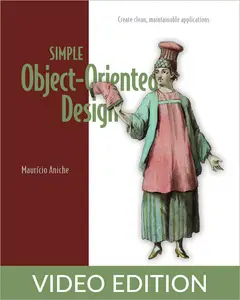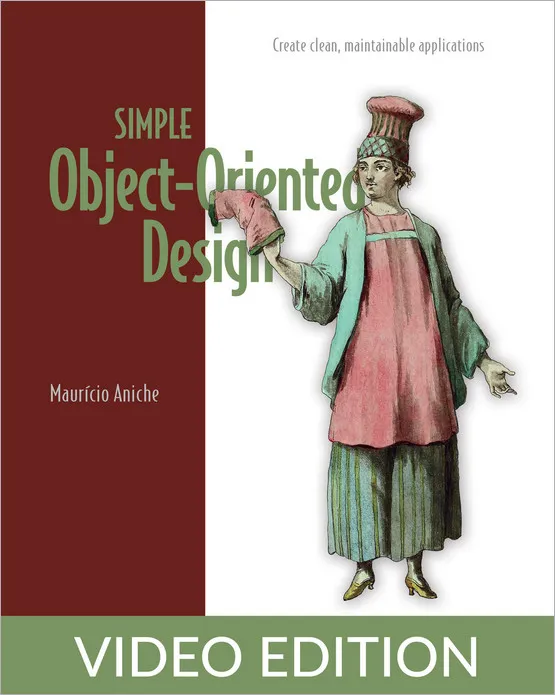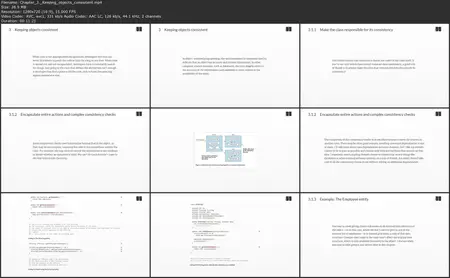Simple Object-Oriented Design, Video Edition
.MP4, AVC, 1280x720, 30 fps | English, AAC, 2 Ch | 4h 27m | 675 MB
Author: Mauricio Aniche
.MP4, AVC, 1280x720, 30 fps | English, AAC, 2 Ch | 4h 27m | 675 MB
Author: Mauricio Aniche
Video description
In Video Editions the narrator reads the book while the content, figures, code listings, diagrams, and text appear on the screen. Like an audiobook that you can also watch as a video.
Write object-oriented code that’s manageable, maintainable, and future-proof.
Keeping your object-oriented designs simple demands a creative approach—and that’s exactly what you’ll find in Simple Object-Oriented Design. This book is full of patterns and principles for reducing complexity, each one proven in author Mauricio Aniche’s 20-year career in software development. You’ll learn how to tackle code’s natural growth in complexity, and adopt a “good enough” approach that means it’s easy to refactor when requirements change.
You’ll discover insightful principles for:
- Making code readable and documented
- Improving consistency and encapsulation
- Managing dependencies
- Designing abstractions
- Handling infrastructure
- Effective modularization
Learn what constitutes both good and bad object-oriented software design, discover how to make better trade-offs in design decisions, and when to embrace complexity over simpler data structures. With this book as your vital reference, you’ll be ready to write code that will last the test of time, without slowing feature delivery to a crawl.
About the Technology
Even a simple object-oriented application can quickly become complex as it evolves. Each new class, method, or feature means more state and abstractions to manage, which in turn increases complexity, maintenance, and time spent detangling legacy code. It takes effort and skill to keep your codebase simple. This book shows you how.
About the Book
Simple Object-Oriented Design: Create clean, maintainable applications presents practical design principles you can use to keep an object-oriented codebase simple as it grows and changes. Written as a collection of practical techniques you can apply in any OO language, it offers tips for concise code, managing dependencies and modules, and designing flexible abstractions. Illuminating figures, real-world examples, and insightful exercises make each principle stick.
What's Inside
- Writing simple, understandable classes
- Flexible abstractions to extend your designs
- Reducing the impact of coupling
About the Reader
Readers should be familiar with an object-oriented language like Java, C#, or Python.





